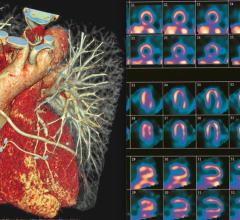September 13, 2016 — Results from a new study suggest that small molecules known as microRNAs may be part of the pathway connecting inflammation with increased heart disease risk in obese people. The new findings were presented at the American Physiological Society’s Inflammation, Immunity and Cardiovascular Disease conference, Aug. 24-27 in Westminster, Colo.
MicroRNAs — molecules that are found throughout the body’s tissues and fluids, such as blood — help regulate gene expression tied to health and disease. Because recent research has shown that microRNAs are key players in the regulation of inflammation and vascular health, researchers from the University of Colorado, Boulder, wanted to know whether obesity is associated with any changes in microRNA levels.
“Studying microRNAs circulating in the blood has the potential to increase our understanding of the higher risk for cardiovascular problems that are associated with obesity,” said study co-author Jaime Hijmans, a predoctoral research fellow in the Integrative Vascular Biology Laboratory at the University of Colorado, Boulder. “MicroRNAs might also prove to be useful as biomarkers of cardiovascular health in obese adults.”
For the study, the researchers examined levels of four microRNAs circulating in the blood of 15 normal weight and 15 obese people. The study participants were between the ages of 47 and 64 and were sedentary nonsmokers who were free of heart disease and had normal blood pressure.
The researchers found that the obese study participants had alterations in the levels of specific circulating microRNAs involved in regulating vascular inflammation, a key element of cardiovascular disease risk. These changes were seen in otherwise healthy obese adults, suggesting that obesity without other risk factors negatively affects the body’s mechanisms for regulating inflammation.
For more information: www.the-aps.org/inflammation


 January 23, 2024
January 23, 2024 








